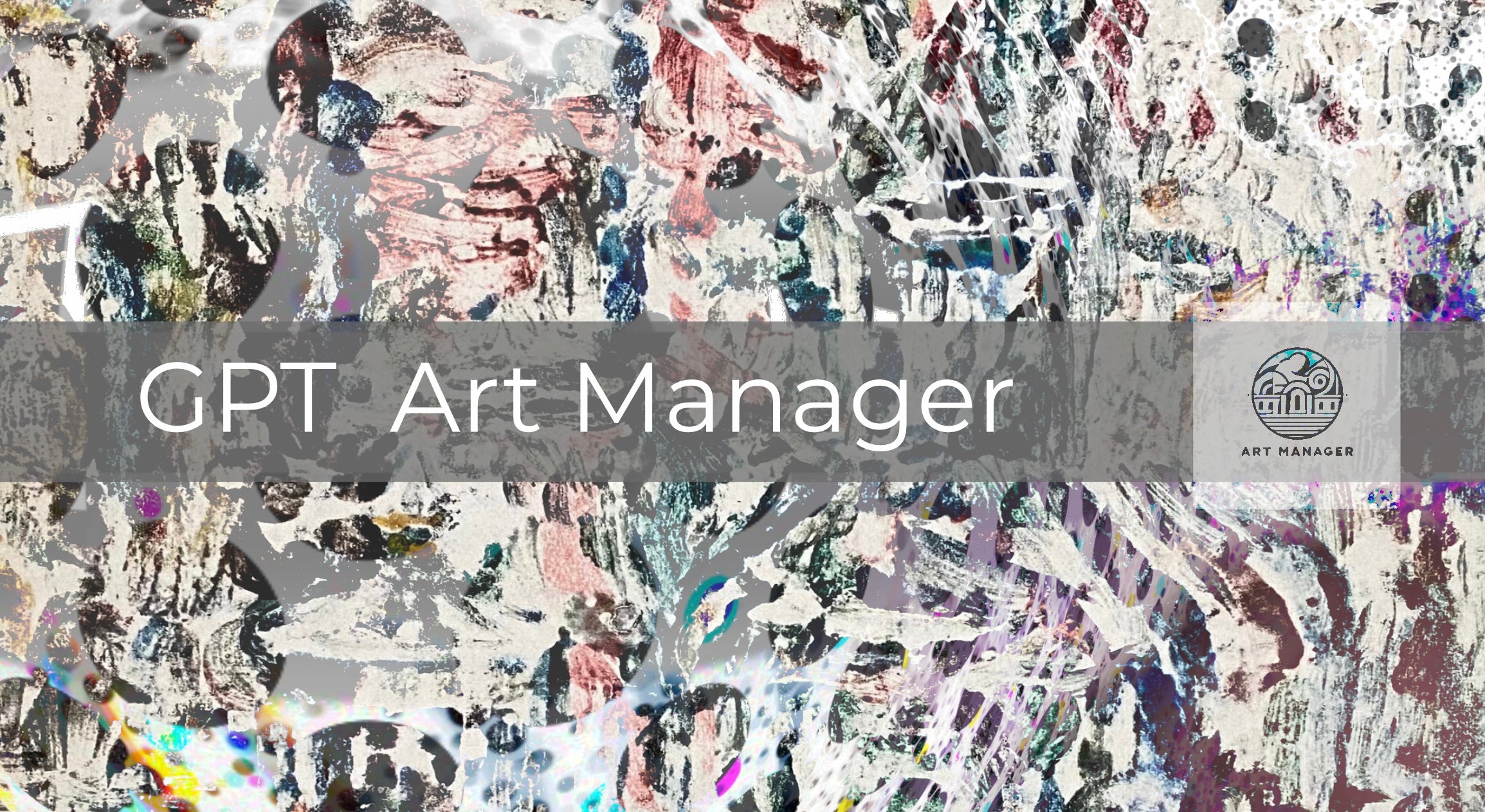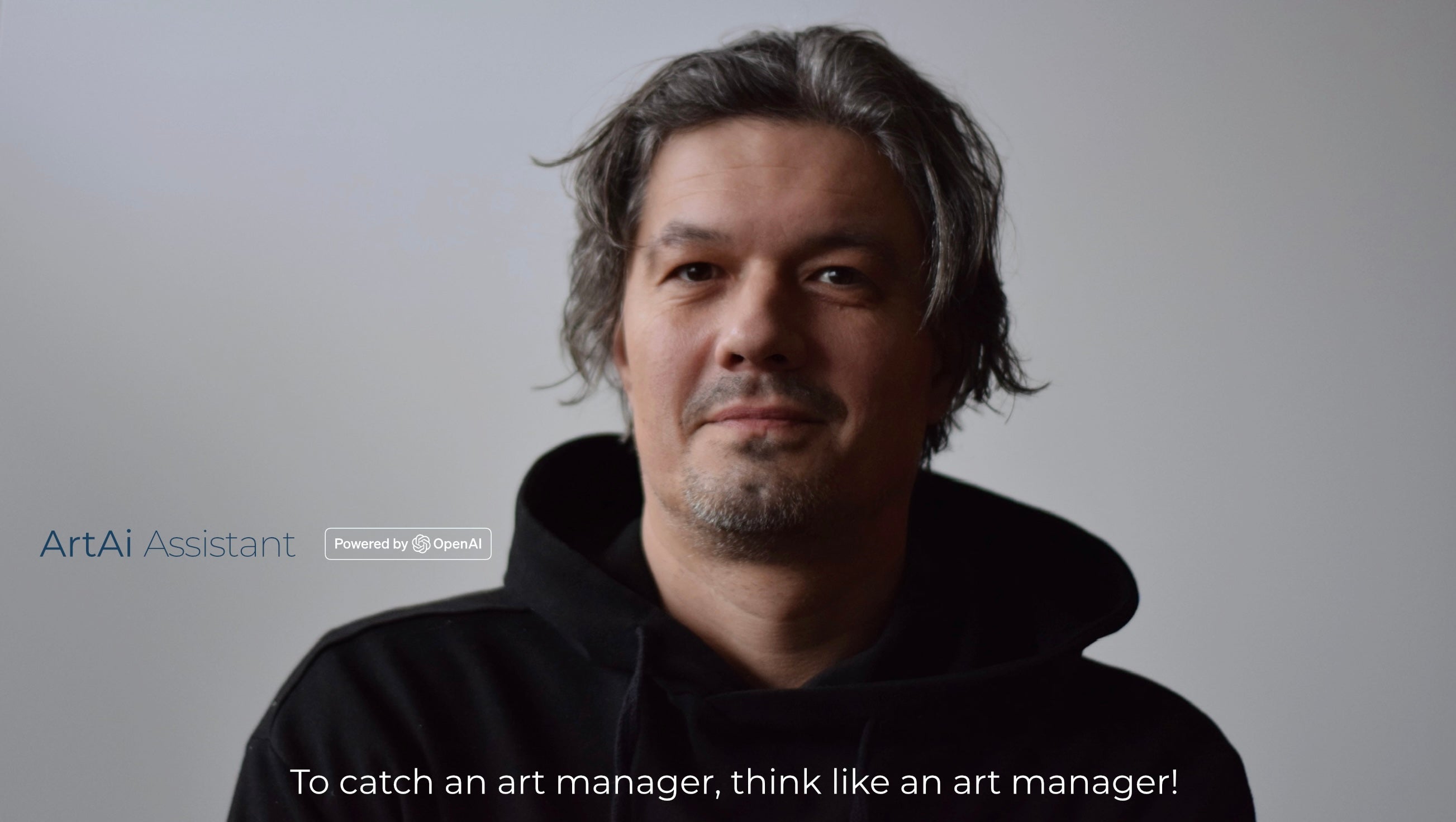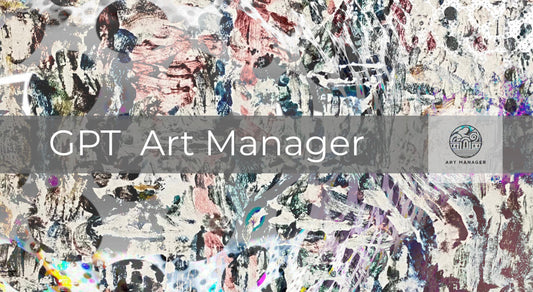
To not use artificial intelligence now is to admit to a lack of natural intelligence.
I am developing an AI assistant — Art Manager, which is already operational and available for use. It can be beneficial for everyone connected to art. Below, I will explain this in more detail.
Goals of the Article
1. Popularize AI.
2. Communicate the importance of integrating modern technologies into the art environment.
3. Find like-minded individuals for the team.
Content
1. Who I am and why I need this.
2. What I am creating and for whom it is useful.
3. What GPT is and how it works.
4. Explanation for beginners. What is a personalized GPT assistant and how it differs from a typical Large Language Model (LLM).
5. It can do everything if it understands you. Prompt Engineering.
6. Progress to date.
7. Plan for the technical improvement of the bot.
8. What is needed for development now.
9. How you can help develop the project right now.
10. How you can join the creation process.
11. Where we are headed. 15 development scenarios, from reality to fantasy.
12. Boldly forward! What cannot be overcome must be led. My examples of usage.

1. Who I am and why I need this
I am an artist, Serhiy Verbicki, and I have always lacked an art manager. This has been my constant problem, which is now solved by artificial intelligence. Using AI, I am developing and improving the fantastic tool Art Manager. It already significantly helps me create and work on my long-term project ArtAi Assistant, eases current tasks, and planning. And I want to share this tool with other artists.
My experience: using Art Manager, I am building the ArtAi Assistant project. Art Manager is already genuinely helping me. Although Art Manager is at an early stage of development, testing has shown that the existing settings make my user experience significantly more relevant than using the latest publicly available paid subscription model from OpenAI.
ArtAi Assistant is a digital entity based on AI, simply put — it’s me at my peak performance. Imagine teaching someone everything you know and adding everything you haven’t yet mastered but always wanted to. Possibly, in the near future, my digital assistant will become an intermediary for direct integration of global AI with my brain activity. But now, we are talking about the auxiliary tool Art Manager, which I use in my work, develop, and provide general access for others to use.
2. What I am creating and for whom it is useful
Art Manager — GPT (Generative Pre-trained Transformers) Innovative AI Assistant for artists. This tool will be useful for artists of all directions and genres, professional curators, art critics, and art managers. For artists, broadly speaking, who need help solving a myriad of routine tasks to free up time directly for creativity.
The assistant is configured so that its ultimate goal is to develop your professional level and promote your art to global markets. If you ask it what to read today or how to plan your day, it will automatically take into account the ultimate goal — developing your competencies as an art-related person and your desire to present your art at the highest possible level. In other words, you have an assistant that constantly maintains the direction and sees the ultimate goal. Over time, you will appreciate how important and effective this is!
Example of Usage
The assistant analyzes publicly available information about you on the Internet, reviews a PDF file with your selected works, and based on this information, writes a short portrait-resume of you as a person and creates a letter-proposal to a gallery.
Quote
GPT Art Manager says: “This sophisticated tool, based on the GPT-4 architecture, is designed to help artists and art managers in their quest to uncover the artist’s talent, bring their works to the best galleries and auctions worldwide, and ultimately change the landscape of contemporary art. Creating more opportunities, freeing up time, structuring the artist’s work, and taking on routine tasks.”
3. What GPT is and how it works
GPT (Generative Pre-trained Transformers) are artificial intelligence models from OpenAI that use transformer architecture to process and generate text based on large volumes of data. They can:
• Answer questions.
• Hold conversations.
• Help write articles.
• Perform specific tasks after additional training.
• Analyze and use unique data added by the user or developer.
• Follow unique user instructions.
And much more. Listing everything makes no sense, as possibilities are limited only by imagination, the number and quality of integrations with other services and AI models, and, of course, your needs.
Every user can create their assistant, connect their unique knowledge base, and write interaction instructions. The combination of these possibilities makes the model unique and valuable.
That is why I decided to create an assistant whose combination of additional unique knowledge and instructions tailored to the needs of artists will create a new useful product for all artists on our small planet and the artistic community.
I propose that artists, art managers, curators, and art critics participate in the creation and testing of the AI Assistant — Art Manager. Join the process!
4. Explanation for beginners. What is a personalized GPT assistant and how it differs from a typical Large Language Model (LLM)
A personalized GPT assistant can be configured to perform specific special tasks. The setup consists of many parameters.
Some of them: its role and your role in the dialogue process, the context in which communication takes place, access to unique data, access to other programs or resources that the regular model does not have access to, special instructions.
• Role — is a conditional point of view from which it will perceive all the queries it receives by default. For example, if you write “I sneezed” in a regular chat, the response will usually be “bless you!”. But if you pre-define the AI’s role as a doctor, after “bless you”, it will explain the nature of sneezing and give some advice to diagnose if you are not ill.
• Context — if you provide the model with context, for example: “You are a doctor who cannot speak out loud right now. I sneezed,” my assistant will respond like this: “The doctor smiles and nods, giving a thumbs up as if saying ‘Bless you!’”. In the context of art, a GPT configured as an art manager knows that you are in the role of an artist or curator, and the dialogue is initially about helping you promote your art to global markets or assisting with routine tasks that, in turn, help you with promotion or professional development. It will respond much more relevantly to you than a regular model.
An interesting explanation to understand the difference between a specially configured GPT and a general LLM model. The general LLM model has learned from vast amounts of information from the Internet and has something akin to an average collective human view of the world, including human foolishness, laziness, or desire to joke. A configured GPT in the role, for example, of a scientist presenting to a scientific council, will filter out 90 percent of the garbage knowledge from the general Internet and respond much more accurately and qualitatively.
• Access to unique data — we can upload our data to the chatbot in text or PDF format. Or give it access to our Google Drive with unique structured information or access to a third-party server or service with a database.
• Access to other programs or resources — we can integrate the bot via API to a third-party program located on a remote server and write interaction instructions. It can check your email, respond to letters, analyze data, make predictions, use another program, or interact with another neural network or service. Numerous scenarios are limited only by our imagination and needs. All this, of course, requires certain knowledge and settings specifically for your tasks. But the world is moving forward, and I am determined!
• Special instructions — we can create so-called macros. Special commands that will gather all the above-mentioned parameters, configured for specific tasks.
I have highlighted several examples on a separate page. Actually, I am too lazy to describe the examples because it is easier to say that it can do almost everything :)
5. It can do everything if it understands you. Prompt Engineering
People learn much more effectively and quickly when they explain something to others. One of the principles of productive interaction with artificial intelligence is the ability to correctly (logically and structurally) set a task. This is called Prompt Engineering. Spending 10 minutes a day asking questions and trying to formulate your query correctly to an AI specializing in art management, in a month you will master the basics of art management faster and better than anywhere else. At this moment, you are customizing the assistant for your tasks, mastering Prompt Engineering. Creating unique prompt sequences that you can use as templates in the future, improving the effectiveness of your interaction with AI. This is 100% synergy that will grow over time exponentially.
6. Progress to date
To date, Art Manager has detailed roles and context written. Thanks to this, it performs tasks that help me as an artist and as the manager of the Art Manager bot much better. I continue to refine and supplement these texts. Next, I plan to develop the bot by creating special commands, allowing us to quickly switch between roles and contexts within one dialogue. This will infinitely expand the effectiveness and convenience of using the bot. Team members will have unique passwords through which the bot will understand whom it is communicating with. This provides additional convenience and efficiency.
But, regardless of this, both now and in the future, anyone will be able to use this assistant, and it will already be much more useful for an artist than a regular chat.
7. Plan for the technical improvement of the bot
1. Improving the text responsible for roles and communication context with the GPT model, and connecting these texts to macros and special commands for quick switching between roles and contexts.
2. Collecting and structuring unique databases to which only the Art Manager bot will have access.
3. Integration with third-party services, programs, and knowledge bases.
4. Integration with other AI models.
8. What is needed for development now
Of course, funding. Using AI costs money, and to open access to the Art Manager assistant for a wide audience in the desired form, we need to pay for the service.
Interested people can participate in collecting and structuring unique databases for training the model.
Focus groups for testing.
For now, I am doing everything myself and at my own expense. You can support financially here: I will be infinitely grateful! And I will teach the bot to sing an ode to joy upon hearing your name :) Just kidding.
9. How you can help develop the project right now
Collecting and structuring information.
So, considering the planned architecture, I am now collecting and structuring the following information to create unique databases that the Art Manager bot will use:
1. Leading global art media.
2. Leading global galleries.
3. Competitions for artists of all genres.
4. Awards.
5. Grant programs, grant program aggregators, funds.
6. Active leading global educational institutions in the field of art.
7. Residencies.
8. Museums.
9. Respected rankings of all the above.
I want to teach the bot to use this knowledge base to implement such scenarios: for example, “what is the nearest painting exhibition in London that I can participate in?” and get an answer with a link to the site and participation conditions. “Which fund can finance my work on creating my project for this exhibition” and get selected links to suitable grant programs. “Help me write a letter to the ‘Artists’ Aid’ Fund to get a grant” and so on.
In principle, such a scenario already works but requires personal experience of using the bot, clarifications during the dialogue, and error checking. You can try it. I have already found a lot of interesting things for myself. But having the knowledge base mentioned above and special settings, the bot’s responses will be much more qualitative.
10. How you can join the creation process
If you have information you want to share with the assistant or want to participate in collecting this information (using the GPT Art Manager assistant itself), join testing, development, or have your ideas — write to me at art.ai.assistant.verbicki@gmail.com, and we will synchronize our efforts. Or check the contacts page for details.
11. Where we are headed. 15 development scenarios, from reality to fantasy
Reality. It works now, use it for your health.
1. Creating an Individual Creative Partner:
GPT can act as a virtual partner-conversationalist for artists, helping generate ideas and providing advice. This can be useful for beginners looking for mentorship or for experienced artists looking to broaden their horizons. Most artists’ first thought on this matter is: “I am too creative myself; why do I need its advice.” Fair enough, I thought so too… but try it :) Personally, I use it regularly. Through trial and error, I found an approach to it, and it gives me exactly what I need.
2. Marketing Consultant:
GPT can help develop individual marketing strategies, create promotional materials, write social media posts, and manage content.
3. Art Text Editor:
GPT can create and help edit high-quality art texts, including artwork descriptions, artist statements, CV structure, manifestos, press releases, blog articles, or exhibition catalog entries, letters to galleries, or curator proposals.
4. Exhibition and Auction Preparation — Presentation Scenarios:
Creating detailed presentation plans for works at exhibitions and auctions.
5. Personal Coach:
GPT as a mentor. GPT works as a personal coach and can be easily configured for any discipline that interests you. You can set its level from beginner to “God” and communicate with it as much as you like.
It already works and will improve. In this direction, I will develop my GPT Art Manager, which will be publicly available shortly.
6. Finding grants and residencies:
GPT can help find appropriate grants and art residencies, as well as assist in writing applications that meet the requirements of funding organizations.
7. Overview of global art media with trend analysis.
8. News overview and collection of useful information from selected galleries, competitions, awards, grant programs, residencies.
Example of an overview of global art media with trend analysis from GPT.
Requires integration with other services but can already work.
9. GPT can be integrated into any of your communication channels, create a model of your voice, and learn to say exactly what is needed.
10. Interactive and generative art:
Creating interactive objects where GPT recognizes the viewer and changes the object’s details (painting) in real-time, responding to their emotions and facial expressions.
Imagine a modern café where technology is used to create the most comfortable atmosphere for every visitor. As a person enters the premises, surveillance cameras immediately read their emotions and emotional state using artificial intelligence. If the system determines that the visitor looks tired or sad, the lighting at their table becomes softer and warmer, creating a cozy atmosphere. If the person looks happy and energetic, the lighting may become brighter, emphasizing their mood.
Artificial intelligence can interact with the collective emotion of the crowd.
Imagine a large concert in a stadium where modern technologies interact with the emotions of the crowd in real-time. By analyzing the collective emotional state of thousands of spectators, artificial intelligence can create an unparalleled show. It adapts to the audience’s mood, changing sound and visual effects, as well as the content of the show interactively, depending on the audience’s mood.
From the perspective of crowd control and potential negative scenarios, this might raise some concerns; however, we will focus on the aspects of art.
(Further, fantasize yourself, endless possibilities for interaction.)
Fantasy that can become reality the day after tomorrow.
11. AI Art Advisor:
GPT can be a virtual advisor capable of predicting the success or failure of certain artworks on the market using big data analytics and trends.
12. Virtual Creative Universe:
GPT can create entire virtual worlds where artists can experiment with different styles, techniques, and ideas in real-time, being in a fully immersive environment.
An immersive environment is an environment that creates a sense of immersion for the user, making them part of a virtual or real scene. Various technologies such as virtual reality (VR), augmented reality (AR), 3D graphics, sound effects, and other sensory stimuli can be used to create a sense of presence and realism.
13. Generation of new artistic styles or genres:
GPT as a creator: creating entirely new artistic styles, directions, or genres, created at the intersection of science and art. Based on the analysis of existing works and trends and their combinations with the latest scientific developments, GPT helps the artist experiment and find unique expressive means.
14. Consciousness transfer into art:
GPT in the future: Technology that allows transferring thoughts, emotions, and memories of the artist directly onto the canvas using a neural interface, where GPT acts as an intermediary between the brain and the canvas.
15. Global art network:
GPT as an independent curator: Creating a global network of artists, galleries, and collectors, where GPT acts as a curator, organizing exhibitions and auctions in real-time, providing artists from different parts of the world the opportunity to collaborate and exchange ideas. (By the way, it came up with this idea itself, and my opinion is that it is more than realistic in the near future.)
12. Boldly forward! What cannot be overcome must be led
After an hour and a half of proofreading this text for grammatical and stylistic errors, my GPT assistant found 64 mistakes and corrected them in 10 seconds.
You can test how it works at the moment by asking your question at this link.
Articles
-

Integration of GPT in Art: How Artificial Intel...
Discover how OpenAI’s GPT helps artists, art managers, and curators optimize their work, freeing up time for creativity. Join the Art Manager project! You can learn more here
Integration of GPT in Art: How Artificial Intel...
Discover how OpenAI’s GPT helps artists, art managers, and curators optimize their work, freeing up time for creativity. Join the Art Manager project! You can learn more here


